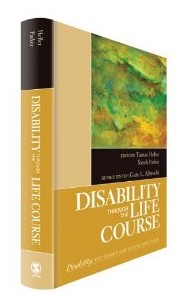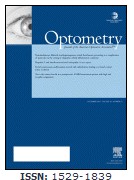NIH-FUNDED STUDY FINDS DYSLEXIA NOT TIED TO IQ
Research on brain activity fails to support widely used approach to identify dyslexic students
Regardless of high or low overall scores on an IQ test, children with dyslexia show similar patterns of brain activity, according to researchers supported by the National Institutes of Health. The results call into question the discrepancy model-the practice of classifying a child as dyslexic on the basis of a lag between reading ability and overall IQ scores.
In many school systems, the discrepancy model is the criterion for determining whether a child will be provided with specialized reading instruction. With the discrepancy model, children with dyslexia and lower-than-average IQ scores may not be classified as learning disabled and so may not be eligible for special educational services to help them learn to read.
"The study results indicate that the discrepancy model is not a valid basis for allocating special educational services in reading," said Brett Miller, Ph.D., director of the Reading, Writing and Related Learning Disabilities Program at the Eunice Kennedy Shriver National Institute of Child Health and Human Development (NICHD), the part of the National Institutes of Health that funded the study. "It follows that, whether they have high IQ scores or low IQ scores, children with great difficulty in learning to read stand to benefit from educational services to help them learn to read."
The study findings were published online in Psychological Science. The study was conducted by Fumiko Hoeft, M.D., Ph.D., of Stanford University, in Stanford, Calif., and colleagues at Boston College; York University, in Toronto; and the Massachusetts Institute of Technology, in Cambridge.
Originally, the U.S. Individuals with Disabilities Education Act required the use of the discrepancy model to identify those students who needed assistance for a learning disability. In the 1990s, studies showed that children who had difficulty learning to read had difficulty with phonological awareness(http://www.nichd.nih.gov/publications/pubs/PRF-teachers-k-3.cfm#phonemic)- matching printed letters of the alphabet to the speech sounds that those letters represented. Based on these findings, the reauthorization of the Act dropped the requirement that school systems use the discrepancy model. Many school systems, however, retained the discrepancy model as a means to classify students needing special educational services in reading.
The current study showed that, when they engaged in tasks involving phonological awareness, children with dyslexia showed the same patterns of brain activation, regardless of whether or not they had high or low IQ scores in relation to their reading abilities.
To conduct the study, the researchers measured the brain activity of 131 typical and poor readers from schools in the greater Pittsburgh and San Francisco Bay areas, using functional magnetic resonance imaging scanners. The students were from 7 to 16 years old. Based on IQ testing, the students were classified into three groups:
-- Typical readers, having typical reading and IQ scores.
-- Discrepant poor readers (having poor reading scores and typical IQ scores).
-- Poor readers with low IQ scores.
The researchers imaged the children's brain activity as the students looked at pairs of words on a computer screen and indicated whether they rhymed (bate and gait) or did not rhyme (price and miss).
After comparing scans from the three groups, the researchers found no basis for distinguishing between groups of poor readers based on their IQ scores.
"These findings suggest there is little reason to rely on the discrepancy model in the classroom any longer," said Dr. Hoeft. "Regardless of IQ, all children with dyslexia should be eligible for support in learning to read."
Comments: It has been shown that many with reading problems have functional vision problems. Isn't it time to make sure all those with LD have visual systems that work they way they should to maximize learning? Take a look at Research update on Visually-Based Reading Disability DM
MainosMemos contains the latest research and information about eye and vision care of children, developmental disabilities, Traumatic/Acquired Brain Injury and other topics of interest to me (and hopefully you!).
Saturday, December 10, 2011
Surgical correction of permanent exotropia outcomes in amblyopic and non-amblyopic patients
Surgical correction of permanent exotropia outcomes in amblyopic and non-amblyopic patients
PORTES, Adriana Valim et al. Surgical correction of permanent exotropia outcomes in amblyopic and non-amblyopic patients. Arq. Bras. Oftalmol. [online]. 2011, vol.74, n.4, pp. 267-270. ISSN 0004-2749. http://dx.doi.org/10.1590/S0004-27492011000400008.
PORTES, Adriana Valim et al. Surgical correction of permanent exotropia outcomes in amblyopic and non-amblyopic patients. Arq. Bras. Oftalmol. [online]. 2011, vol.74, n.4, pp. 267-270. ISSN 0004-2749. http://dx.doi.org/10.1590/S0004-27492011000400008.
This retrospective study of 37 clinical records that compared the surgical outcome of exotropia in amblyopic and non-amblyopic patients. The postoperative deviation was assessed at one month and after six months. They ages were for the amblyopes 24.7 ± 14.2 years and non-amblyopes 22.6 ± 18.6 years. The failure rate (please note that I am using term failure rates here instead of the phrase success rates as used in the abstracts) in the immediate postoperative period was 40% for those with amblyopia) and 0% for those without amblyopia (success was not defined in the abstract) and approximately 20% for the amblyopic group 6 months later.
Although this is a free, open access paper, since only the abstract was written in English (the paper is in Portuguese), many of my questions could not be answered (like what was their definition of success/failure).
In any case, why would you opt to have surgery with a 40% failure rate? Why do 3rd party payers pay for a surgical intervention with such high failure rates?
As I always state when I am reporting on research dealing with strabismus surgery, I have and will continue to refer patients to have strabismus surgery when appropriate, but I usually recommend that the patient have pre and post surgical intervention vision therapy.
We need clinical trials that show the benefit of having the patient participate in a program of optometric vision therapy both before and after surgical intervention....and that when this occurs the surgery success rates actually increase. DM
Friday, December 9, 2011
iBAM 2011 Irish Books Art and Music
I had an opportunity to be the photographer for this fine event at the Irish American Heritage Center recently. I was just asked to be a staff photographer for IAN (the Irish American News) as well! I told all at the iBAM event that I am Italian by blood and Irish by friendship!! Enjoy. DM
Thursday, December 8, 2011
3D Movies and Your Vision
I don't know how I missed this one...but my friend, colleague and fellow Illinois College of Optometry graduate, Robert P. Rutstein, OD., MS; is featured. Bob is a professor at the optometry program at the Univeristy of Alabama.
Wednesday, December 7, 2011
Disability across the Life Course
I just received this announcement and thought you might be interested in obtaining this new text:
The recently published book "Disability across the Life Course" by Tamar Heller and Sarah Parker Harris, from the Institute on Disability and Human Development, University of Illinois at Chicago (UIC), explores topics central to the lives of people with disabilities across the life course. It is part of The SAGE Reference Series on Disability, edited by Gary Albrecht,(UIC). In this book, the life course approach assumes that, beginning prenatally, events occurring early in life affect later periods in one's life. It recognizes that development does not necessarily proceed in neat stages and that impairments interact with social determinants (e.g., culture and socioeconomic status) and environmental aspects (e.g., services and supports) across the life course, resulting in differing outcomes for people. The disability studies approach adds to a life course perspective by bringing in the concepts of disability identity, societal attitudes, the lived experience of people with disabilities and the social and political contexts affecting their lives. In addition to providing an overall theoretical and historical background, this book addresses disability across the life course through delineation of various age phases from pre-natal periods to death. Cross-cutting issues highlighted are: family; health; policy, legislation, and service; and self-determination and participation.
The following is a link to the book: http://www.amazon.com/Disability-Through-Life-Course-Reference/dp/1412987679
The recently published book "Disability across the Life Course" by Tamar Heller and Sarah Parker Harris, from the Institute on Disability and Human Development, University of Illinois at Chicago (UIC), explores topics central to the lives of people with disabilities across the life course. It is part of The SAGE Reference Series on Disability, edited by Gary Albrecht,(UIC). In this book, the life course approach assumes that, beginning prenatally, events occurring early in life affect later periods in one's life. It recognizes that development does not necessarily proceed in neat stages and that impairments interact with social determinants (e.g., culture and socioeconomic status) and environmental aspects (e.g., services and supports) across the life course, resulting in differing outcomes for people. The disability studies approach adds to a life course perspective by bringing in the concepts of disability identity, societal attitudes, the lived experience of people with disabilities and the social and political contexts affecting their lives. In addition to providing an overall theoretical and historical background, this book addresses disability across the life course through delineation of various age phases from pre-natal periods to death. Cross-cutting issues highlighted are: family; health; policy, legislation, and service; and self-determination and participation.
The following is a link to the book: http://www.amazon.com/Disability-Through-Life-Course-Reference/dp/1412987679
Messiah by Handel: The Complete Work

 This concert is going to be incredible! The Apollo Chorus is an awesome group of men and women dedicated to the very best choral music. This concert is on Sat Dec 10th and Sunday the 18th). Click on the link above to learn more.
This concert is going to be incredible! The Apollo Chorus is an awesome group of men and women dedicated to the very best choral music. This concert is on Sat Dec 10th and Sunday the 18th). Click on the link above to learn more.Tuesday, December 6, 2011
The Top Ten Most Cited Articles in Optometry
The Top 10 Cited articles published in Optometry, Journal of the American Optometic Association in the last five years include:
Ciuffreda, K.J. Kapoor, N. Rutner, D. Suchoff, I.B. Han, M.E. Craig, S. Occurrence of oculomotor dysfunctions in acquired brain injury: A retrospective analysis Optometry, Volume 78, Issue 4, 2007, Pages 155-161
Andrasko, G. Ryen, K. Corneal staining and comfort observed with traditional and silicone hydrogel lenses and multipurpose solution combinations Optometry, Volume 79, Issue 8, 2008, Pages 444-454
Jiang, B.Tea, Y.C. O'Donnell, D. Changes in accommodative and vergence responses when viewing through near addition lenses Optometry, Volume 78, Issue 3, 2007, Pages 129-134
Richer, S. Devenport, J. Lang, J.C. LAST II: Differential temporal responses of macular pigment optical density in patients with atrophic age-related macular degeneration to dietary supplementation with xanthophylls Optometry, Volume 78, Issue 5, 2007, Pages 213-219
Shintani, K. Shechtman, D.L. Gurwood, A.S. Review and update: Current treatment trends for patients with retinitis pigmentosa Optometry, Volume 80, Issue 7, 2009, Pages 384-401
Vaughn, W. Maples, W.C. Hoenes, R. The association between vision quality of life and academics as measured by the College of Optometrists in Vision Development Quality of Life questionnaire Optometry, Volume 77, Issue 3, 2006, Pages 116-123
Ciuffreda, K.J. Rutner, D. Kapoor, N. Suchoff, I.B. Craig, S. Han, M.E. Vision therapy for oculomotor dysfunctions in acquired brain injury: A retrospective analysis Optometry, Volume 79, Issue 1, 2008, Pages 18-22
Doughty, M.J. Jonuscheit, S. An assessment of regional differences in corneal thickness in normal human eyes, using the Orbscan II or ultrasound pachymetry Optometry, Volume 78, Issue 4, 2007, Pages 181-190
Kester, E.M. Charles Bonnet syndrome: Case presentation and literature review Optometry, Volume 80, Issue 7, 2009, Pages 360-366
Sullivan-Mee, M. Halverson, K.D. Saxon, M.C. Saxon, G.B. Qualls, C.Central corneal thickness and normal tension glaucoma: A cross-sectional study Optometry, Volume 77, Issue 3, 2006, Pages 134-140
I congratulate all the authors, the American Optometric Association, Dr. Paul Freemen, Optometry's editor and Optometry's Journal Review Board for consistently producing such an outstanding publication.
As a member of the Journal Review Board, I am somewhat biased, but if the latest citation index findings are any indication, Optometry, is not only moving up in the index, but also is being used by scientific publications as an impoprtant authority in the area of eye care science and clinical practice.
I am also thrilled that my very good friends and colleagues, Drs. Ciuffreda, Kapoor, Suchoff, Gurwood and Richter are the authors/co-authors of these fine papers.
Please note the number of articles emphasizing binocular vision, accommodation, oculomotor ability, optometric vision therapy, brain injury, patients with special needs and quality of life issues....all of which are near and dear to my heart....and should be a sign that optometry's future rests upon our ability to guarentee single, clear, comfortable, pathology-free, binocular vision for all our patients.
If you are an optometrist, read your journal.
If you are an optometrist, write for your journal.
If you are an optometrist, tell others about your journal.
Do it.
DM
Ciuffreda, K.J. Kapoor, N. Rutner, D. Suchoff, I.B. Han, M.E. Craig, S. Occurrence of oculomotor dysfunctions in acquired brain injury: A retrospective analysis Optometry, Volume 78, Issue 4, 2007, Pages 155-161
Andrasko, G. Ryen, K. Corneal staining and comfort observed with traditional and silicone hydrogel lenses and multipurpose solution combinations Optometry, Volume 79, Issue 8, 2008, Pages 444-454
Jiang, B.Tea, Y.C. O'Donnell, D. Changes in accommodative and vergence responses when viewing through near addition lenses Optometry, Volume 78, Issue 3, 2007, Pages 129-134
Richer, S. Devenport, J. Lang, J.C. LAST II: Differential temporal responses of macular pigment optical density in patients with atrophic age-related macular degeneration to dietary supplementation with xanthophylls Optometry, Volume 78, Issue 5, 2007, Pages 213-219
Shintani, K. Shechtman, D.L. Gurwood, A.S. Review and update: Current treatment trends for patients with retinitis pigmentosa Optometry, Volume 80, Issue 7, 2009, Pages 384-401
Vaughn, W. Maples, W.C. Hoenes, R. The association between vision quality of life and academics as measured by the College of Optometrists in Vision Development Quality of Life questionnaire Optometry, Volume 77, Issue 3, 2006, Pages 116-123
Ciuffreda, K.J. Rutner, D. Kapoor, N. Suchoff, I.B. Craig, S. Han, M.E. Vision therapy for oculomotor dysfunctions in acquired brain injury: A retrospective analysis Optometry, Volume 79, Issue 1, 2008, Pages 18-22
Doughty, M.J. Jonuscheit, S. An assessment of regional differences in corneal thickness in normal human eyes, using the Orbscan II or ultrasound pachymetry Optometry, Volume 78, Issue 4, 2007, Pages 181-190
Kester, E.M. Charles Bonnet syndrome: Case presentation and literature review Optometry, Volume 80, Issue 7, 2009, Pages 360-366
Sullivan-Mee, M. Halverson, K.D. Saxon, M.C. Saxon, G.B. Qualls, C.Central corneal thickness and normal tension glaucoma: A cross-sectional study Optometry, Volume 77, Issue 3, 2006, Pages 134-140
I congratulate all the authors, the American Optometric Association, Dr. Paul Freemen, Optometry's editor and Optometry's Journal Review Board for consistently producing such an outstanding publication.
As a member of the Journal Review Board, I am somewhat biased, but if the latest citation index findings are any indication, Optometry, is not only moving up in the index, but also is being used by scientific publications as an impoprtant authority in the area of eye care science and clinical practice.
I am also thrilled that my very good friends and colleagues, Drs. Ciuffreda, Kapoor, Suchoff, Gurwood and Richter are the authors/co-authors of these fine papers.
Please note the number of articles emphasizing binocular vision, accommodation, oculomotor ability, optometric vision therapy, brain injury, patients with special needs and quality of life issues....all of which are near and dear to my heart....and should be a sign that optometry's future rests upon our ability to guarentee single, clear, comfortable, pathology-free, binocular vision for all our patients.
If you are an optometrist, read your journal.
If you are an optometrist, write for your journal.
If you are an optometrist, tell others about your journal.
Do it.
DM
How Meditation Benefits The Brain
How Meditation Benefits The Brain
I am reposting this since many of you have asked for the link to the article....I usually add the link...but forgot to do so .... here it is http://www.medicalnewstoday.com/articles/238093.php
Enjoy! DM
.... found that the experienced meditators, regardless of the type of meditation they practised, seemed able to switch off the default mode network, which has been linked to lapses of attention, and disorders such as attention deficit and hyperactivity disorder (ADHD), and anxiety. This part of the brain, comprising the medial prefrontal and posterior cingulate cortex, has also been linked to the accumulation of beta amyloid plaques in Alzheimer's disease.
They also found that when the default mode network was active in the experienced meditators, other parts of the brain, associated with self-monitoring and cognitive control, were active at the same time. This was not the case with the novices....
Monday, December 5, 2011
How The Brain's Structure And Genes Affect Autism And Fragile X Syndrome
How The Brain's Structure And Genes Affect Autism And Fragile X Syndrome
....Research just released shows that scientists are finding new tools to help understand neurodevelopmental disorders like autism and fragile X syndrome. These studies show in new detail how the brain's connections, chemicals, and genes interact to affect behavior. The research findings were presented at Neuroscience 2011, the Society for Neuroscience's annual meeting and the world's largest source of emerging news about brain science health.....
Subscribe to:
Posts (Atom)


